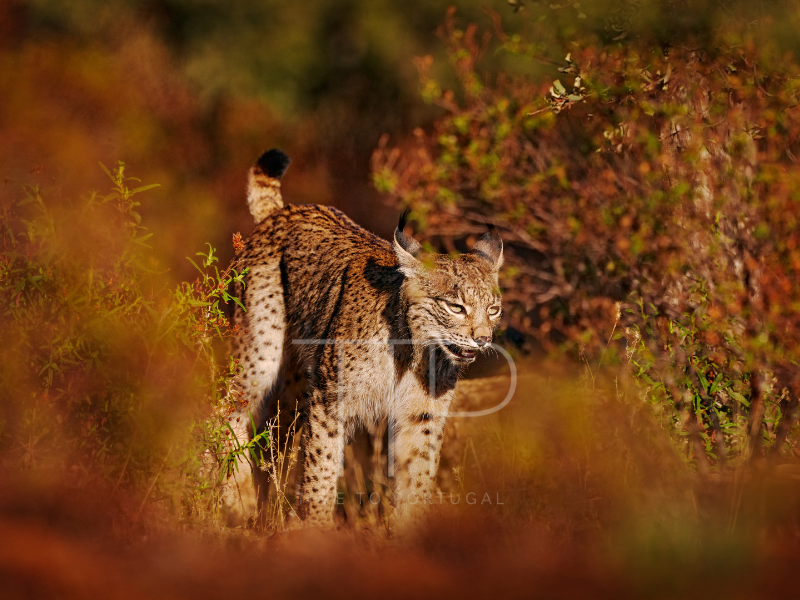Thanks to genetic exchange, the Iberian lynx is more diverse now than it was 4,000 years ago, a finding that will help to decide on future conservation strategies for the species, as its genetic viability is not yet guaranteed.
The sequencing of the complete genome of the Iberian lynx (Lynx pardinus), published in 2016, provided a valuable tool to researchers working on the conservation of this animal, emblematic of the peninsular fauna. In parallel to efforts to increase the population of the felid, experts point out that ensuring genetic variety is essential for the species to adapt to changes in the environment, consolidate its reproductive capacity or increase the chances of surviving diseases.
This Monday, a new study led by researchers from the Doñana Biological Station provides new information on the genetic past of the species. The study indicates that the genetic diversity of today’s Iberian lynxes is greater than that of the species thousands of years ago. The researchers believe that genetic mixing with its closest relative, the common lynx (Lynx lynx, also called boreal or Eurasian lynx), contributed to the greater genetic variation of the modern Iberian lynx, despite population declines in recent centuries.
It is estimated that thousands of years ago, the distribution of the Iberian lynx extended as far south as France and Italy. The boreal lynx, on the other hand, until recently inhabited the north of the peninsula, creating opportunities for genetic exchange between the two species. This flow would have spread over the years to modern populations.
“The analyses revealed that modern lynxes shared more genetic material with their sister species, the Eurasian lynx, than the older lynxes. This suggests that there would have been a genetic exchange between the two species during the last two millennia,” summarizes researcher María Lucena, first author of the study published in the journal Nature Ecology & Evolution, who developed this work during her doctoral thesis in Doñana.
The analysis is based on the sequencing of the genomes of three ancient Iberian lynxes from fossil bone samples (dated approximately 2,000 to 4,000 years ago): one from Andújar from around 4,300 years ago, another from Alcanar in Tarragona from 2,500 years ago and another from Algarve in Portugal, dated approximately 2,100 years ago. They then compared these genomes with the available data from 30 current specimens, with a boreal lynx that lived approximately 2,500 years ago, from the north of the peninsula, and with 12 modern boreal lynx from six different populations.
“The samples were provided by paleontologists working at each of these sites,” explains José Antonio Godoy, a researcher at the Doñana Biological Station. “They are part of a set of 58 samples already analyzed in a previous study, in which data were obtained from hundreds of historical samples and ten ancient samples, but only from the mitochondrial genome, which is more abundant and relatively easier to obtain. For this new work, we tried again with 20 of the most promising samples available and were able to recover nuclear genome data from three. These are not many, but they provide the first and very valuable insight into nuclear genetic variation in the Iberian lynx in the distant past, approximately 2000-4000 years ago”.
POPULATION BOTTLENECKS
The Iberian lynx diverged from its close relative, the boreal lynx, approximately one million years ago, although their genomes reveal subsequent DNA transfer between the two species. Since splitting from the lineage, the species has gone through four population “bottlenecks” that left its numbers at around a hundred individuals in two nuclei at the beginning of this century. The first came with its isolation in the Peninsula and with causes related to climatic variations; the second, 300 years ago, when its numbers fell to only about 1,5000 individuals; the last in the 20th century due to epidemics among rabbits, hunting and the destruction of its natural habitat.
Despite the successes in its recovery in recent decades, the Iberian lynx has not yet reached a population that ensures its genetic viability for the future. Experts estimate that at least 1,100 reproductive females are needed, while 326 were counted in the 2022 census. For this reason, it is still essential to increase the number of subpopulations and promote connectivity between them for genetic exchange. This objective is pursued by the LIFE-Lynxconnect project, financed by the European Commission.
In this context, the findings of the article could have implications for future conservation strategies. In particular, the hypothesis of a genetic crossbreeding with a different population, a strategy for restoring genetic diversity and decreasing inbreeding. Under normal conditions this would be discouraged, as the offspring would have a lower probability of survival and reproduction and thus decrease the viability of the population. However, the authors believe that in the case of the lynx it could be applicable in the event of a population crisis.
“The possibility of genetic management based on hybridization with a nearby species could be considered as an option of last resort to restore lost diversity, especially in a case like the lynx where we know that hybridization has already occurred in the past and will possibly occur in the future if distributions overlap again,” explains José Antonio Godoy. “It’s not something we are proposing to do now. Fortunately, the species is recovering dramatically and the goal is to get populations large enough to ensure its long-term genetic and demographic viability.”

